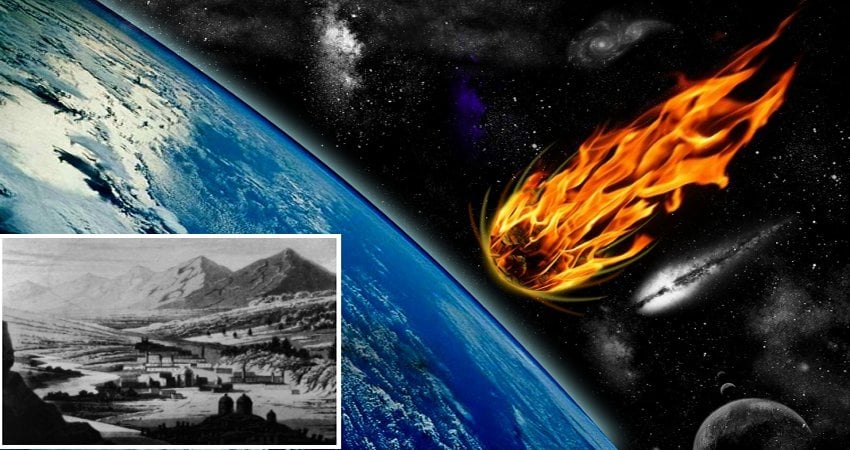Black Holes: Fascinating And Mysterious – Could They Revolutionise Our Understanding Of The Universe?
Eddie Gonzales Jr. – MessageToEagle.com – University of Sheffield research could revolutionize our understanding of black holes, time, and dark energy in the universe.
Black holes, regions where gravity is so strong that light cannot escape, have fascinated astrophysicists and theoretical physicists dedicated to uncovering their secrets.
A digital impression of a white hole. Image credit: Philip Drury, University of Sheffield
Black holes, where gravity prevents even light from escaping, fascinate astrophysicists and theoretical physicists. This interest has inspired writers and filmmakers, with works like 2001: A Space Odyssey, The Martian, and Interstellar exploring their allure.
According to Einstein’s Theory of General Relativity, anyone trapped inside a black hole would fall towards its centre and be destroyed by immense gravitational forces. This centre, known as a singularity, is the point where the matter of a giant star, which is believed to have collapsed to form the black hole, is crushed down into an infinitesimally tiny point. At this singularity, our understanding of physics and time breaks down.
Using the laws of quantum mechanics, a fundamental theory describing the nature of the universe at the level of atoms and even smaller particles, the new study proposes a radically different theoretical standpoint where, rather than a singularity signifying the end, it could represent a new beginning.
The new paper entitled ‘Black Hole Singularity Resolution in Unimodular Gravity from Unitarity’, published on 11 March in the scientific journal Physical Review Letters, aims to illustrate the point where our current grasp of physics and time falters.
While black holes are often described as sucking everything, including time, into a point of nothingness, in the paper, white holes are theorised to act in reverse, ejecting matter, energy and time back into the universe.
The study uses a simplified, theoretical model of a black hole, known as a planar black hole. Unlike typical black holes, which have a spherical shape, a planar black hole’s boundary is a flat, two-dimensional surface. The researchers’ ongoing work suggests that the same mechanism could also apply to a typical black hole.
“It has long been a question as to whether quantum mechanics can change our understanding of black holes and give us insights into their true nature,” said Dr Steffen Gielen, from the University of Sheffield’s School of Mathematical and Physical Sciences, who co-wrote the paper with Lucía Menéndez-Pidal from Complutense University of Madrid.
“In quantum mechanics, time as we understand it cannot end as systems perpetually change and evolve.”
The scientists found that, according to quantum mechanics, black hole singularities are replaced by regions of large quantum fluctuations—temporary energy changes where space and time do not end. Instead, space and time transition into a white hole, a theoretical region functioning opposite to a black hole. A white hole could be where time begins.
“While time is, in general, thought to be relative to the observer, in our research time is derived from the mysterious dark energy which permeates the entire universe,” Dr Gielen continued.
“We propose that time is measured by the dark energy that is everywhere in the Universe, and responsible for its current expansion. This is the pivotal new idea that allows us to grasp the phenomena occurring within a black hole.”
Dark energy is a mysterious, theoretical force that scientists believe drives the accelerating expansion of the universe. The new study uses dark energy almost as a point of reference, with energy and time as complementary ideas that can be measured against one another.
Tantalisingly, the theory that what we perceive as a singularity is actually a beginning suggests the existence of something even more enigmatic on the other side of a white hole.
“Hypothetically you could have an observer – a hypothetical entity – go through the black hole, through what we think of as a singularity and emerge on the other side of the white hole. It’s a highly abstract notion of an observer but it could happen, in theory,” Dr Gielen added.
Beyond such theoretical musings, the suggestion of a profound connection between the nature of time at the most fundamental level and the mysterious dark energy that governs the cosmos will be explored further in the months and years ahead.
The new research also suggests novel approaches to reconciling gravity and quantum mechanics, potentially paving the way for groundbreaking new fundamental theories and breakthroughs in our understanding of the universe.
Written by Eddie Gonzales Jr. – MessageToEagle.com Staff Writer











